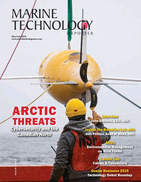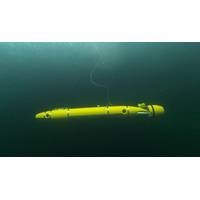
Strong Winds, Calm Seas
with varied expertise, each covering a special task within the wind farm’s ecosystem, explained Marius Wirtz, Dipl.-Ing. (FH), Engineer at the German Research Center for Artificial Intelligence (DFKI) and project leader of the AUV team. In addition to DFKI, collaborators include the Alfred Wegener Institute Helmholtz Centre for Polar and Marine Research (AWI), Helmholtz Institute for Functional Marine Biodiversity at the University of Oldenburg (HIFMB), BioConsult SH, the Danish company DHI A/S and the Norwegian company Spoor AS.Ecosystem ExaminationThe AUV team from DFKI will monitor the underwater
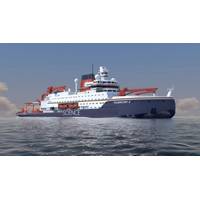
Elomatic and Thyssenkrupp Ink Ship Design Contract for New Polarstern Icebreaker
be built at the large and modern shipyard of tkMS in Wismar. The shipyard has a remarkable track record in developing complex icebreaking ships, with more than 120 ships built for polar regions.In December 2024, tkMS was awarded the public tender for the construction of the new Polarstern by the Alfred Wegener Institute for Polar and Marine Research in Bremerhaven in Germany.The contract represents the culmination of a two-year partnership between tkMS and Elomatic to develop the proposal for the new Polarstern project.This vessel is set to become the world’s largest and most advanced icebreaking
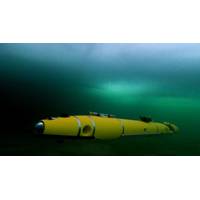
SeaMe Project to Leverage AUVs, AI to 'Stand Watch' in Offshore Wind Farms
offshore environment.The SeaMe project, led and financed by RWE, was launched in the summer of 2024 and is scheduled to run for three years. In addition to DFKI, the research partners include the Helmholtz Institute for Functional Marine Biodiversity at the University of Oldenburg (HIFMB), the Alfred Wegener Institute Helmholtz Center for Polar and Marine Research (AWI), BioConsult SH, and the Danish company DHI A/S. The AUV DeepLeng in the Maritime Exploration Hall at the DFKI in Bremen. Copyright: DFKI, Annemarie Pop
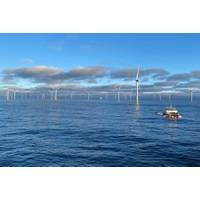
RWE to Employ Innovative Ecosystem Monitoring Tech at Kaskasi Offshore Wind Farm
wind farm with the goal of reducing carbon intensity of monitoring as well as minimizing the impact on marine lifeThe project will be carried out in collaboration with partners including the Helmholtz Institute for Functional Marine Biodiversity at the University of Oldenburg (HIFMB), the Alfred Wegener Institute Helmholtz Centre for Polar and Marine Research (AWI), BioConsult SH, the Danish company DHI and the German Research Centre for Artificial Intelligence (DFKI).The partners plan to share the results on a dedicated online public platform.“As a global leading player in offshore wind
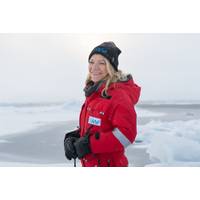
MBARI Names Antje Boetius President and CEO
and CEO of MBARI, a private, non-profit oceanographic research center in Moss Landing, Calif. Boetius, who has garnered international acclaim for her work, will assume her role on May 1, 2025, succeeding the retiring Chris Scholin.Boetius joins MBARI after a seven-year tenure as director of the Alfred Wegener Institute for Polar and Marine Research in Germany. Her appointment comes at a pivotal moment for MBARI, which is set to unveil a cutting-edge robotic technology lab and welcome its new flagship research vessel, the David Packard, in the upcoming year.“Antje Boetius brings extensive experience

SAMS’ New Sensor Sheds More Light on Ocean Photosynthesis
and built the OptiCAL sensors.As part of the MOSAiC expedition, the German research icebreaker Polarstern was frozen into the icepack of the central Arctic for a year in 2019, in order to investigate the annual cycle of the Arctic climate and ecosystem.The team led by Clara Hoppe from the Alfred Wegener Institute, Helmholtz Centre for Polar and Marine Research (AWI) focused on studying phytoplankton and ice algae. These are responsible for the majority of photosynthesis in the central Arctic. Unexpectedly, the measurements showed that just a few days after the end of the month-long polar night, plant
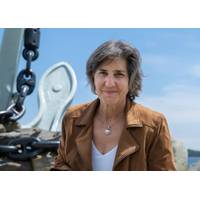
Happy to be Blue
positions at Woods Hole Oceanographic Institute and Victoria University in New Zealand. She soon took a professorship at the University of Western Australia in Perth, where she taught and led research for 17 years. In 2014, Waite became section head of polar biological oceanography at the Alfred Wegener Institute for Polar and Marine Research before returning to Halifax and her alma mater in 2018.Q: Within your career, do you have a most valuable experience, or set of experiences?Dr. Waite: I think the biggest thing I learned was that politics are very local. And you only need to step two doors down
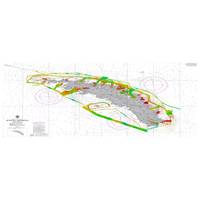
UKHO Provides Bathymetric Surveys for Seabed 2030
and best practice, to support the ambitious goal of completely map-ping the world’s oceans by 2030 (Seabed 2030).The UKHO has started supplying data that covers the South Atlantic and the waters around Antarctica to GEBCO via the Seabed 2030 Southern Ocean Regional Centre, located at the Alfred Wegener Institute. This data is an important contribution to the International Bathymetric Chart of the Southern Ocean (IBCSO), GEBCO and Seabed 2030. The supplied data has con-tributed 3,753,614 new data points to IBCSO and GEBCO, covering a combined 13,500 nm², including South Georgia (1,500 nm²
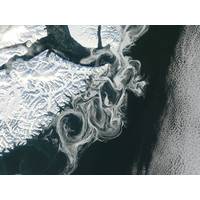
Hidden Behavior of Arctic Ocean Currents Could Alter Climate Change Predictions, Study finds
to our predictions into new aspects of The Arctic, as well as the global climate. It also provides us with crucial insight into how we can continue to develop and improve our future predictions of the Arctic environment.”Scientists from the National Oceanography Centre (NOC) and Alfred Wegener Institute (AWI), collaborating within the Advective Pathways of nutrients and key Ecological substances in the Arctic (APEAR) project, used high resolution, realistic ocean and ice model simulation, alongside satellite observations to compare the flow of two sets of particles starting from the same
 February 2025
February 2025


